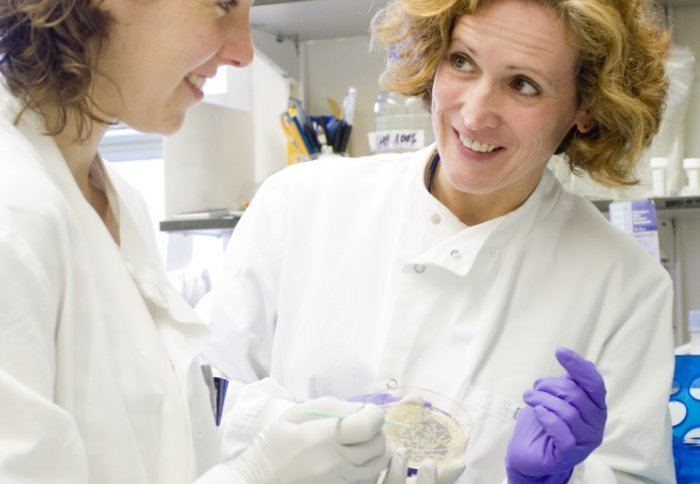Name Wendy Barclay | ||
 | ||
Education Natural Sciences, Cambridge University, 1988.PhD study at the Common Cold Unit, Salisbury. Known for Research of Influenza Virus | ||
Prof wendy barclay no suggestion that bird flu case will impact on christmas turkey supply
Wendy Barclay is a British virologist who currently holds a Chair in Influenza Virology at the Imperial College London. She leads a team of scientists in conducting studies upon the influenza virus in order to learn more about its physiology and morphology in order to discover possible ways a vaccine could work against the virus. In particular, they are trying to understand more about influenza virus mutations, and how they can allow scientists to create new vaccines against possible flu pandemics.
Contents
- Prof wendy barclay no suggestion that bird flu case will impact on christmas turkey supply
- I science coffee chat e 1 with prof wendy barclay why we catch bird flu
- Education Career
- Summary of Work
- Current research
- Notable Work
- Memberships
- Editorial Board
- Filmography
- References

I science coffee chat e 1 with prof wendy barclay why we catch bird flu
Education & Career
Barclay graduated with a degree in Natural Sciences from Cambridge University in 1988. For a postgraduate study, she conducted medical research at the Common Cold Unit in Salisbury with Dr. David Tyrrell FRS. There she was involved in human challenge studies with rhinovirus, in order to study the virus and its interaction with the human body. Afterwards, she participated in two postdoctoral positions. One was with Professor Jeff Almond at the University of Reading, and the other was at Mount Sinai Medical Center in New York with Professor Peter Palese. While at Readings, she learned many molecular virology skills that would help her to form the basis of her research career. At Mount Sinai, she was the first person to modify techniques for recovering recombinant influenza virus from cloned cDNA for the study of type B influenza virus.
Summary of Work
Towards the beginning of her research career, Barclay worked with both rhinoviruses and various types of small RNA viruses. After undertaking her postdoctoral position at the Mount Sinai Medical Center in New York, Barclay has worked mainly with the Influenza virus. There are three different types of influenza viruses: A, B, and C. All three types of the influenza virus belong to the Orthomyxoviridae family. Viruses that belong to this family are single stranded (-) RNA viruses that replicate within the nucleus of the host's cells. Influenza types A and B are routinely spread from human to human, and they are responsible for seasonal flu epidemics each year. Influenza type C virus causes mild respiratory infections and are not known to cause epidemics; unlike its two other family members. Barclay has worked intensively with Influenza A and Influenza B viruses for at least a decade. She has published many articles detailing the importance of understanding how Influenza viruses interact with their hosts, understanding their genomic makeup, and understand how different strains of the two viruses interact with host cells differently. In addition, she has written articles describing the importance of understanding how some viruses can cross species barriers in order to prevent another epidemic. In February 2015, CNN posted an article on its webpage that included statements made by Barclay. In it she told of her concerns about another possible flu pandemic, and how if it ever did happen it would spread fast, and it would spread hard.
Current research
Barclay has her current team working on understanding and discovering more information about the relationship between pathogenesis and the influenza virus. She is also trying to learn more about host range restrictions for the influenza virus, and its transmission between humans and animals. Barclay is also very interested in studying influenza virus mutations. It is these mutations that allow scientists to create new vaccines against possible influenza pandemics. She is particularly keen on understanding the resistance mechanisms of antiviral compounds, and characterization of novel cell substrates and attenuated virus backbones for influenza vaccines.
Notable Work
Her most notable work involved looking at cells infected with the influenza A virus and identifying physiological RIG-I agonists. This article was published in Cell in 2010, and has been cited over 270 times. Research gathered for the article explained how one of the human cell's defense against RNA viruses comes in the form of RIG-I's. Whenever a cell is infected with a RNA virus, RIG-I activation triggers an antiviral immune response. However, it was not fully known what part of the virus infection triggers RIG-I activation. Results of this study found that RIG-I activation is caused by the process of viral replication and correspond to full-length virus genomes, or single-stranded RNA viral genomes bearing 5′-triphosphates.
